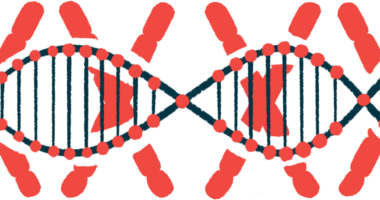Catalyst secures U.S. rights to vamorolone ahead of FDA decision
Decisions on approval of DMD therapy expected by year's end in US, EU

Ahead of pending regulatory decisions for vamorolone — a treatment for Duchenne muscular dystrophy (DMD) now under review in the U.S. and Europe — Catalyst Pharmaceuticals has fully acquired the commercial rights to the therapy in North America.
The finalized deal comes about a month after Catalyst agreed to terms with vamorolone’s developer, Santhera Pharmaceuticals. That agreement included an upfront cash payment of $75 million, plus a $15 million investment.
Catalyst now will have exclusive rights to the novel corticosteroid therapy in the U.S., Canada, and Mexico for DMD, as well as any future approved indications of vamorolone.
If Santhera chooses to pursue commercial partnerships for marketing vamorolone in Europe and Japan, Catalyst will be allowed to negotiate with Santhera for those rights before any other company may do so.
“The license for vamorolone reflects our strategic focus on opportunities where we can not only apply novel technology to address critical unmet patient needs, but where we can leverage Catalyst’s existing integrated capabilities and infrastructure to commercialize the drug efficiently,” Patrick J. McEnany, chairman and CEO of Catalyst, said in a company press release.
Deal also gives Catalyst rights to vamorolone in Canada, Mexico
Regulatory decisions are expected in the U.S. by late October, and in Europe by the end of the year. Santhera also has applied in the U.K. for approval of vamorolone.
Should the therapy be approved, Catalyst plans to launch it in the U.S. in early 2024. The company also will include vamorolone in its Catalyst Pathways specialty pharmacy program — a free, personalized support program for patients using Catalyst-marketed medications.
“We believe that vamorolone, if approved, has the potential to deliver significant near and long-term value and to be a very meaningful advancement to the current standard of care paradigm for DMD patients,” McEnany said.
“Our planned strategy to facilitate access to vamorolone underscores our steadfast commitment to improving the lives of patients suffering from rare neurological conditions,” McEnany added.
Corticosteroids have long been part of standard care for DMD. These medications exert anti-inflammatory effects by mimicking the activity of the hormone cortisol in the body. In so doing, they help to reduce inflammation in muscle tissue and prevent muscle damage.
However, the drugs come with a slew of side effects, such as high blood pressure, weight gain, and mood changes, especially when used for longer periods.
Vamorolone belongs to a class of medications called dissociative corticosteroids — therapies intended to preserve the benefits of standard corticosteroids while avoiding the unwanted side effects.
It was originally developed by ReveraGen BioPharma, with Santhera obtaining the rights to it in 2020.
The therapy was granted orphan drug status in the U.S. and the European Union, as well as fast track and rare pediatric disease status in the U.S. Such designations are intended to speed the development of therapies that offer significant benefit for rare, serious, or life-threatening diseases.
We believe that vamorolone, if approved, has the potential to deliver significant near and long-term value and to be a very meaningful advancement to the current standard of care paradigm for DMD patients.
Santhera’s applications for vamorolone’s approval were backed by data from the Phase 2b VISION-DMD trial (NCT03439670), completed in 2021. That trial compared vamorolone, prednisone — a conventional corticosteroid — and a placebo in 121 boys with DMD, ages 4-6, who were able to walk.
The results indicated that both steroids were similarly effective, outperforming the placebo group in measures of motor function after six months of daily treatment.
Those gains were sustained for up to about a year, and patients who switched from prednisone to vamorolone after six months saw no loss of efficacy.
Importantly, fewer side effects were reported with vamorolone than with prednisone. Also, boys who switched to vamorolone saw a reversal of stunted growth that had been associated with use of prednisone.
A pilot Phase 2 trial (NCT05166109) now is underway to evaluate vamorolone’s potential for Becker muscular dystrophy, another form of the rare disease. That study is recruiting up to 39 men, ages 18-64, at the University of Pittsburgh.







